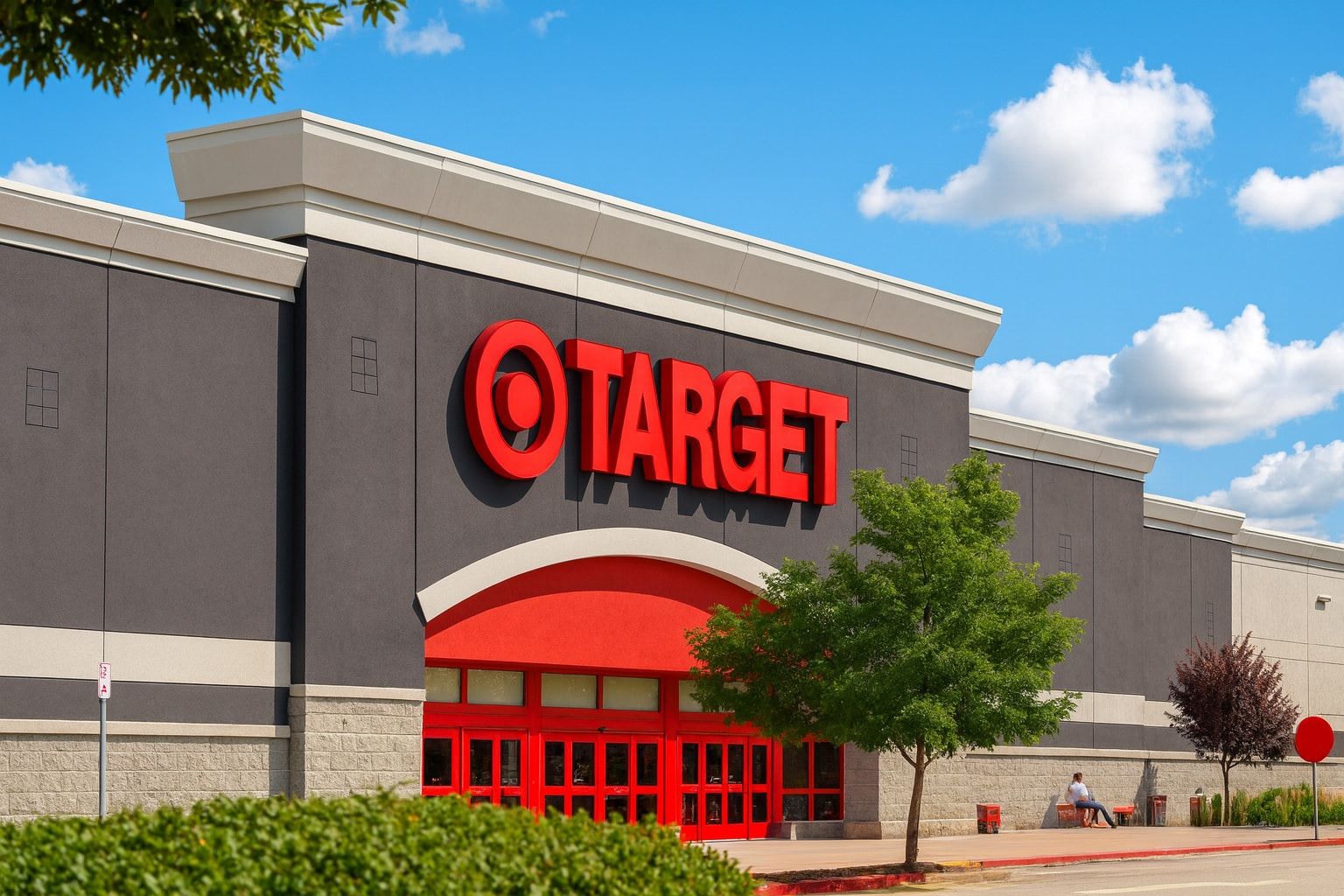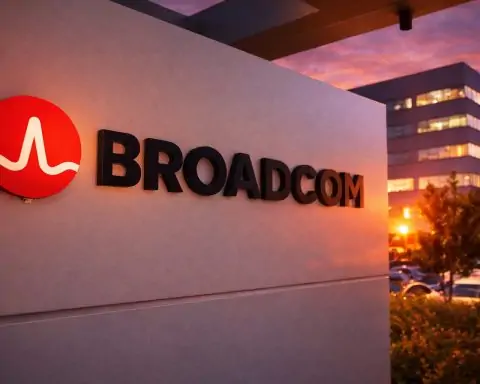- Major Cuts: Target will cut about 1,000 corporate jobs and eliminate 800 open roles – roughly 8% of its HQ workforce [1] [2]. This is the retailer’s first big layoff in a decade [3].
- CEO’s Message: Incoming CEO Michael Fiddelke says the reorganization will make Target “stronger, faster and better positioned” for the future [4] [5]. He urged employees to work remotely next week while teams learn who is affected [6].
- Sales Slump: Target has been struggling with falling sales and internal missteps. Critics note inventory issues and customer complaints (long lines, empty shelves) have hurt holiday shopping [7] [8]. A recent pullback from diversity programs also led to consumer backlash, and three straight quarters of sales declines [9] [10].
- Market Reaction: Target shares were around $94 on Oct 23, 2025, near five-year lows and down about 30–35% this year [11]. By contrast, Walmart (Target’s big rival) hit new highs on an AI strategy, with analysts noting a “resilient customer” is still buying smart [12].
- Holiday Outlook: Retailers warn of a muted holiday season. U.S. holiday sales growth is projected at only +2–3% this year (versus +4.2% last year) [13], and online sales are expected to grow just ~5.3% [14]. Experts say consumers are “dealing with a lot in the broader economy” and will hunt for deeper discounts [15] [16].
Layoffs Details & Rationale
Target announced on Oct. 23 that its Twin Cities headquarters will shed about 1,000 corporate positions and close another 800 open jobs [17] [18]. About 80% of the cuts are U.S.-based, mostly managers [19]. The company says this eliminates roughly 8% of HQ staff and is aimed at speeding up decision-making. “To better serve our guests, we’re prioritizing the need to work faster and reduce the complexity that has been created over time,” Fiddelke told employees [20] [21]. He wrote that “the truth is, the complexity we’ve created over time has been holding us back” – too many layers and overlapping roles have slowed innovation [22].
Affected employees will be paid through early January and may receive severance packages [23]. All U.S. corporate staff were instructed to work from home next week for confidentiality and efficiency [24] [25]. The cuts – one of Target’s biggest corporate shake-ups – come just weeks after the company delayed a return-to-office mandate, citing employee uncertainty [26].
Target stresses this is not primarily a cost-cutting move. A spokesman told CNN that layoffs were “a step to rewire our organization” so decisions happen more quickly [27]. In other words, management presents the cuts as a restructuring rather than belt-tightening – though analysts worry about the company’s troubled turnaround.
Struggles Behind the Cuts
Retail analysts say Target has fallen behind rivals on pricing and merchandise. GlobalData’s Neil Saunders noted in August that Target’s value perception and inventory execution have suffered – customers often find empty shelves and long checkout lines, especially at clothing and home departments [28] [29]. The company’s 2025 sales have been weak: second-quarter comparable sales fell 1.9% YoY, and profit margins hit a five-year low [30]. Target’s own reports blame this on heavy markdowns and canceled orders.
Part of the slowdown stems from a consumer backlash. In early 2025 Target pulled back certain diversity, equity and inclusion (DEI) initiatives, triggering boycott calls among some customers [31] [32]. Foot-traffic data suggest store visits have lagged since that controversy began. Meanwhile, rising costs from new tariffs have pressured all retailers, and Target may feel them acutely given its model of curated, often discretionary goods.
Fiddelke – a 20-year company veteran set to become CEO in early 2026 – replaces Brian Cornell (who announced in August he will step down). Some investors say swapping one internal leader for another is no cure-all. GlobalData’s Saunders warned that an insider chief “does not necessarily remedy the problems of entrenched groupthink” at Target [33]. Shareholder Charles Sizemore (who recently sold his stake) bluntly predicted “no turnaround will be happening on a reasonable timeline” [34]. In short, many market-watchers say Target must fix fundamentals (inventory, pricing, customer experience) before growth can return [35] [36].
Stock, Dividends & Analyst View
Investors have punished Target’s stock this year. By late October the shares hovered around $94 [37], roughly 30% below where they started 2025 (and about 23% below their price five years ago [38]). Target is still a Dividend King with 54 straight years of raises, yielding nearly 5% [39] – the highest payout in a decade. That high yield draws income investors, but analysts caution any price gains may take time.
Wall Street is mixed. About 38 analysts rate Target a Hold, with an average 12-month price target near $109 [40] – roughly 15% above today’s level. Some bullish forecasts exist (Morgan Stanley’s model targets ~$160, for example [41]), but others are skeptical. Bernstein, RBC and even former Target bulls at CFRA have turned cautious or downgraded the stock. TS2 (TechStock²) notes that, on average, analysts foresee minimal sales growth and only modest profit gains in the near term [42] [43].
By contrast, Walmart’s stock is near its 52-week high (around $107) on optimism about technology and e-commerce initiatives [44]. Nearly all analysts rate Walmart a Buy, with average 12-month targets in the low $110s (implying ~10% upside) [45]. The consensus forecast for Walmart is steady mid-single-digit growth next year [46], making it a more “defensive” choice. TS2 summarizes: “Walmart is seen as a core defensive retail holding…most analysts expect mid-single-digit growth ahead” [47] [48]. Target, in contrast, is viewed more as a speculative turnaround – its cheap valuation and 5%-plus yield may reward investors if Fiddelke can revive traffic, but many say patience is required [49] [50].
Broader Retail Context & Holiday Forecast
Target’s announcement comes amid a broader industry slowdown. Several major retailers have issued tepid forecasts for the holiday season. Surveys and analytics firms predict U.S. holiday retail sales will grow only ~2–3% in 2025 (versus +4.2% last year) [51], while online sales are projected up just 5–6% [52] [53]. Data firm Adobe notes shoppers are “dealing with a lot in the broader economy” and are leaning on big sales events for deals [54]. For example, Adobe forecasts only 5.3% growth in holiday e‑commerce spending, down from 8.7% last year [55].
Despite the gloom, some retailers have raised guidance. Walmart and Macy’s say they expect a better season, while Target and Best Buy are holding forecasts steady [56]. Analysts warn shoppers will trade down or postpone big purchases, which tends to favor discounters. Walmart’s moves (like a high-profile ChatGPT integration and the new “Circle Week” sale) have boosted sentiment [57] [58]. Target’s strategy will need to adjust: it’s known for more premium, design-forward goods – a strength in good times but a vulnerability when consumers hunt bargains. One analyst quipped that Target “used to be very attuned to consumer demand” but lately “has lost its grip on delivering for the American shopper” [59].
Outlook & Expert Commentary
Most experts see Target’s path forward as challenging. The TS2 analysis warns that big turnaround gains may not be imminent. “Consensus forecasts assume modest continued gains…Target’s beaten-down price still remains on value investors’ radar,” but only if inventory and merchandising issues are fixed first [60] [61]. Some value investors note that if Target regains traffic, the stock could jump double digits, thanks to its low valuation and fat dividend [62].
Looking ahead, forecasts for the coming year are cautious. If the restructuring works, analysts expect up to ~10–20% total returns (including dividends) in the best case [63], but they stress the need to “get shoppers back into stores” first [64]. In the words of Adobe’s Pandya, consumers are still hunting bargains and using online shopping as a discount lever [65]. With inflation pressures cooling only gradually, retailers face a delicate balancing act of clearing inventory while preserving margins. In sum, Target’s layoffs are a signal of deep-seated issues. The company’s cheap stock and high yield make it a contrarian play, but analysts say the turnaround will require clear execution and a patient market.
Sources: Company and analyst statements, Reuters, Axios, Fox Business, TechStock² analysis [66] [67] [68] [69] [70] [71]. (Data as of Oct. 24, 2025.)
References
1. www.axios.com, 2. www.foxbusiness.com, 3. economictimes.indiatimes.com, 4. www.axios.com, 5. www.foxbusiness.com, 6. economictimes.indiatimes.com, 7. www.axios.com, 8. ts2.tech, 9. eng.pressbee.net, 10. economictimes.indiatimes.com, 11. ts2.tech, 12. ts2.tech, 13. ts2.tech, 14. ts2.tech, 15. www.reuters.com, 16. ts2.tech, 17. www.axios.com, 18. www.foxbusiness.com, 19. www.foxbusiness.com, 20. www.foxbusiness.com, 21. www.axios.com, 22. www.foxbusiness.com, 23. www.axios.com, 24. economictimes.indiatimes.com, 25. www.axios.com, 26. www.axios.com, 27. economictimes.indiatimes.com, 28. www.axios.com, 29. ts2.tech, 30. ts2.tech, 31. www.axios.com, 32. eng.pressbee.net, 33. ts2.tech, 34. ts2.tech, 35. ts2.tech, 36. ts2.tech, 37. ts2.tech, 38. ts2.tech, 39. ts2.tech, 40. ts2.tech, 41. ts2.tech, 42. ts2.tech, 43. ts2.tech, 44. ts2.tech, 45. ts2.tech, 46. ts2.tech, 47. ts2.tech, 48. ts2.tech, 49. ts2.tech, 50. ts2.tech, 51. ts2.tech, 52. ts2.tech, 53. www.reuters.com, 54. www.reuters.com, 55. www.reuters.com, 56. www.reuters.com, 57. ts2.tech, 58. ts2.tech, 59. ts2.tech, 60. ts2.tech, 61. ts2.tech, 62. ts2.tech, 63. ts2.tech, 64. ts2.tech, 65. www.reuters.com, 66. economictimes.indiatimes.com, 67. www.foxbusiness.com, 68. www.axios.com, 69. ts2.tech, 70. www.reuters.com, 71. ts2.tech










